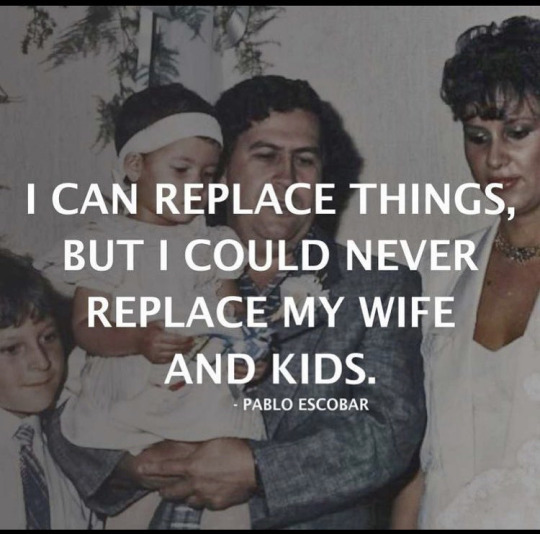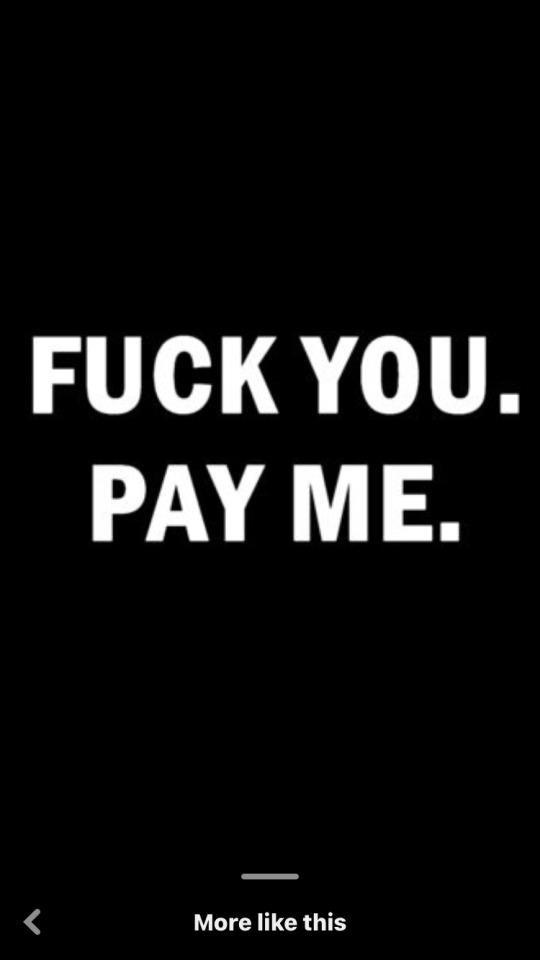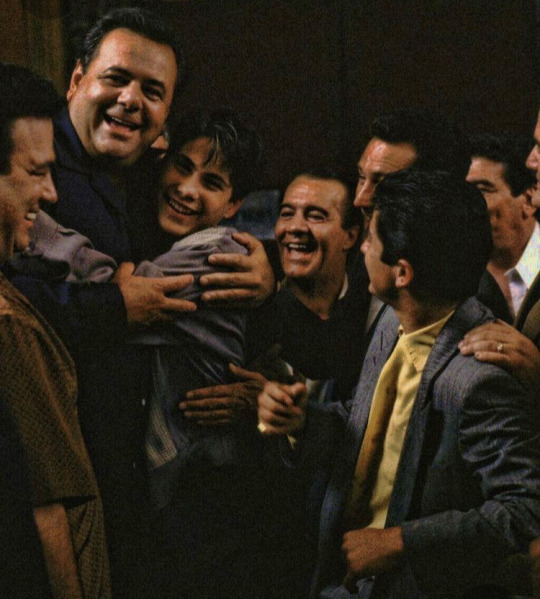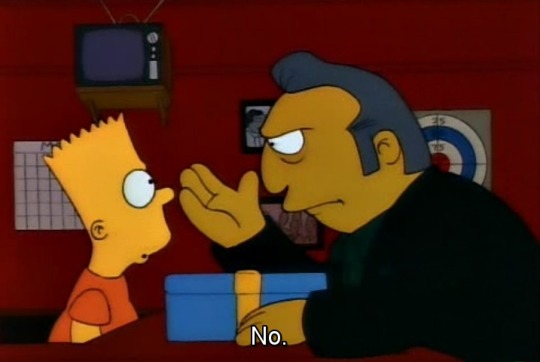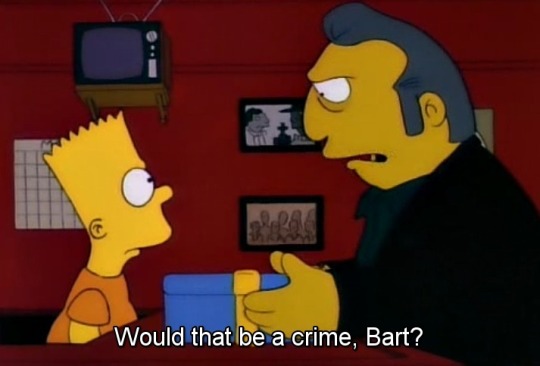Text
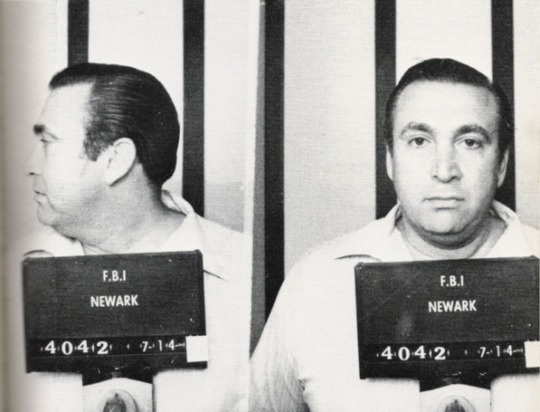
Roy Albert DeMeo,September 7, 1940[– January 10, 1983) was an Italian-American mobster in the Gambino crime family of New York City. He headed the a group referred to as the "DeMeo crew", which became notorious for the large number of alleged murders they committed and for the grisly way they disposed of the bodies, which became known as "the Gemini Method".The crew committed a very large amount of murders, with the majority of them committed by DeMeo himself. Roy Albert DeMeo was born in 1940 in Bath Beach, Brooklyn, to a working class Italian immigrant family of Neapolitan origin. Anthony Gaggi, a soldier in the Gambino crime family, noticed DeMeo and told him that he could make even more money with his successful business if he came to work directly for the Gambinos. Through the late 1960s, DeMeo's organized crime prospects increased on two fronts. He continued in the loansharking business with Gaggi, and began developing a crew of young men involved in car theft. It was this collective of criminals that would become known both in the underworld and in law enforcement circles as the DeMeo crew.
The first member of the DeMeo crew was 16-year-old Chris Rosenberg, who met DeMeo in 1966 when he was dealing marijuana at a Canarsie gas station. DeMeo helped Rosenberg increase his business and profits by loaning him money so that he could deal in larger amounts. By 1972, Rosenberg had introduced his friends to DeMeo and they began working for him as well. The members of the crew included Joseph "Dracula" Guglielmo (DeMeo's cousin), Joseph and Patrick Testa, and Anthony Senter. DeMeo joined a Brooklyn credit union that same year, gaining a position on the board of directors shortly afterward. He utilized his position to launder money earned through his illegal ventures. He also introduced colleagues at the credit union to a lucrative side-business, laundering the money of drug dealers he had become acquainted with. DeMeo also built up his loansharking business with funds stolen from credit union reserves.
DeMeo's collection of loanshark customers, while still primarily those in the car industry, soon included other businesses such as a dentist's office, an abortion clinic, restaurants and flea markets. He was also listed as an employee for a Brooklyn company named S & C Sportswear Corporation, and frequently told his neighbors he worked in construction, food retailing and the used car business.
In late 1974, a conflict that had erupted between the DeMeo crew and Andrei Katz, a young auto repair shop owner who was partners with DeMeo in a stolen car ring, had continued to escalate. In May 1975, DeMeo was informed by a police officer that, as a result of this conflict, Katz was cooperating with authorities. In June Katz was lured to a place where he could be confronted. After being abducted, he was stabbed to death and then dismembered. An accomplice who helped bait Katz confessed her role, and Joseph Testa and Henry Borelli were both arrested. They would secure an acquittal at trial in January 1976.
This was the first known murder committed by the DeMeo crew, and for years it was thought to have been the first occasion where DeMeo or members of his crew had dismembered a body for disposal. In 2003, however, new information was provided to the FBI by Bonanno underboss Salvatore Vitale, who claimed that in 1974 he was ordered to deliver the corpse of a man who had just been murdered to a garage in Queens so that it could be disposed of by DeMeo. As the 1970s continued, DeMeo cultivated his followers into a crew experienced with the process of murdering and dismembering victims. With the exception of killings intended to send a message to any who would hinder their criminal activities, or murders that presented no other alternative, a set method of execution was established by DeMeo and crew to ensure that victims would be dispatched quickly and then made to disappear. The style of execution was dubbed the "Gemini Method", after the Gemini Lounge, the primary hangout of the DeMeo crew, as well as the site where most of the crew's victims were killed.
The process of the Gemini Method, as revealed by multiple crew members and associates who became government witnesses in the early 1980s, was to lure the victim through the side door of the lounge and into the apartment in the back portion of the building. At this point, a crew member (almost always DeMeo according to crew-member-turned-government-witness Frederick DiNome) would approach with a silenced pistol in one hand and a towel in the other, shooting the victim in the head then wrapping the towel around the victim's head wound like a turban to stanch the blood flow. Immediately after, another member of the crew (originally Chris Rosenberg, up until his 1979 murder, according to government witness testimony) would stab the victim in the heart to prevent more blood from pumping out of the gunshot wound. By then, the victim would be dead, at which point the body would be stripped of clothing and dragged into the bathroom, where the remaining blood drained out or congealed within the body. This was to eliminate the messiness of the next step, when crew members would place the body onto plastic sheets laid out in the main room and proceed to dismember it, cutting off the arms, legs and head.
The body parts would then be put into bags, placed in cardboard boxes and sent to the Fountain Avenue Dump in Brooklyn, where so many tons of garbage were dropped each day that it would be nearly impossible for the bodies to be discovered. During the initial stages of an early 1980s federal/state task force targeting the DeMeo crew, a plan by authorities to excavate sections of the dump to locate remains of victims was aborted when it was deemed too costly and unlikely to locate any meaningful evidence. The landfill, opposite the Starrett City Apartment Complex on Pennsylvania Avenue in the heavily African-American East New York section of Brooklyn, across the Belt Parkway, was shut down in 1985, and capped over since, all signs (and odors) that a landfill had existed gone, replaced by a parkland.
Some victims would be killed in other ways for varying reasons. At times, suspected informants or those who committed an act of disrespect against a member of the crew or their superiors had their bodies left in the streets of New York to serve as a message and warning. There were also occasions where it would not be possible to lure the intended victim into the Gemini Lounge, in which case other locations would have to be used. A cabin cruiser owned by Richard DiNome was used on at least one occasion to dispose of bodies. In the latter half of 1975, DeMeo became a silent partner in a peep show/prostitution establishment in Bricktown, New Jersey after the owner of the business became unable to pay his loansharking debts. DeMeo also began dealing in bestiality and child pornography, which he sold to his New Jersey establishment as well as connections he had in Rhode Island. When Gaggi found out about DeMeo's involvement in such taboo films, he ordered DeMeo to stop under the threat of death. However, DeMeo defied Gaggi and continued the practice. Gaggi did not retaliate, and, according to his nephew, Dominick Montiglio, the subject was never mentioned again as long as DeMeo continued making payments to Gaggi. DeMeo also dealt in narcotics despite the Gambino family strictly forbidding such activity. In 2011, former Gambino associate Greg Bucceroni alleged that during the late 1970s and early 1980s, DeMeo utilized his henchman Richard Kuklinski on behalf of Robert "DB" DiBernardo and the Gambino family's pornography establishments in New York, New Jersey, Philadelphia, and Baltimore. Here, Kuklinski would traffic illegal pornography, collect debts, and carry out contract killings.
As 1975 drew to a close, DeMeo was the subject of IRS investigations into his income. Months earlier, the Borrough of Brooklyn Credit Union had been pushed into insolvency as a result of DeMeo and his colleagues' plundering of its finances. As a result, DeMeo quit the Credit Union. Before an indictment could be handed down against him, he utilized false affidavits from businesses owned by friends and acquaintances claiming he was on their payrolls as an employee. These affidavits served to account for some of his income, allowing him to reach a settlement with the IRS.
DeMeo's sources of income, as well as his crew, continued to grow. By July 1976, DeMeo added an automobile firm by the name of Team Auto Wholesalers to his loanshark customers. The owner of Team Auto, Matthew Rega, also purchased stolen vehicles from the crew and sold them off at a New Jersey car lot that he owned. He also involved himself with hijacking delivery trucks from John F. Kennedy International Airport. His crew now included Danny Grillo, a hijacker who had just been released from prison.
In the fall of 1976, the Gambino family went through a massive change when its boss Carlo Gambino died of natural causes. Paul Castellano was named the boss, with Aniello Dellacroce retaining the position of underboss. The implications of this were twofold for DeMeo. Gaggi was elevated to the position of caporegime, taking over the crew of men Castellano previously headed. This promotion was beneficial for DeMeo, whose mentor was now even closer to the family leadership. Another advantage was that with Gambino deceased, new associates would be eligible for membership into the family. Castellano did not immediately "open the books" for new members, opting instead to promote existing members and shuffle around the crews' leaders. He also allegedly opposed the idea of DeMeo being made. Castellano involved himself in white-collar crime and looked down on street-level members such as DeMeo. Additionally, Castellano felt DeMeo was uncontrollable. Gaggi's attempts at persuading Castellano to make DeMeo were continually rejected. By 1977, DeMeo became distraught by this situation and searched for opportunities that would ensure larger returns for his superiors. By 1982, the FBI was investigating the enormous number of missing and murdered persons who were linked to DeMeo or who had last been seen entering the Gemini Lounge. It is around this time that an FBI bug in the home of Gambino family capo Angelo Ruggiero picked up a conversation between Ruggiero and Gene Gotti, a brother of John Gotti.
In the conversation, it is discussed that Paul Castellano had put out a hit on DeMeo, but was having difficulty finding someone willing to do the job. Gene Gotti mentions that his brother, John, was wary of taking the contract, as DeMeo had an "army of killers" around him. It is also mentioned in this same secretly recorded conversation that, at that time, John had killed fewer than 10 people, while DeMeo had killed at least 38. According to mob turncoat Sammy Gravano, eventually the contract was given to Frank DeCicco, but DeCicco and his crew could not get to DeMeo either. DeCicco allegedly handed the job to DeMeo's own men. DeMeo's son Albert wrote that in his final days, DeMeo was paranoid and knew that he would be killed soon. DeMeo considered faking his own death and leaving the country. However, instead he left the house one day and never returned. Albert DeMeo later found Roy's personal belongings such as his watch, wallet, and ring in his study room, and a Catholic pamphlet. In his final days, DeMeo was seen wearing a leather jacket, with a shotgun concealed underneath. On January 10, 1983, DeMeo went to crew member Patty Testa's house for a meeting with his men. That night, he failed to attend his daughter Dione's birthday party. As it was unusual for DeMeo to miss an important family occasion, his family suspected that something had happened to him. Ten days later, on January 20, DeMeo's Cadillac was discovered in the parking lot of the Veruna Boat Club in Brooklyn. DeMeo's partially frozen body was found in the trunk with a chandelier on top of it.[11] He had been shot multiple times in the head and had a bullet wound in his hand, assumed by law enforcement to be a reflexive defensive wound caused when his killers opened fire on him. There are several accounts of DeMeo's death. The task force investigating the DeMeo crew theorized that DeMeo was set up in a similar manner to how he set up Rosenberg, and that Gaggi, Testa and Senter were present when he was killed.[12] When Lucchese family underboss Anthony "Gaspipe" Casso became an FBI informant in 1993, he said that Paul Castellano had ordered DeMeo's death, but due to the DeMeo crew's reputation as hardened killers, the Gotti and DeCicco crews had been unable or unwilling to carry out the hit. Therefore DeCicco passed the contract to Casso, who knew Anthony Senter and Joseph Testa, and ordered them to kill DeMeo. In Casso's account, DeMeo was seated and about to receive coffee, when Testa and Senter suddenly opened fire on him. Nino Gaggi was not present. In April 1984, Colombo crime family soldier Ralph Scopo was overheard explaining to an associate that DeMeo had been killed by his own family because they merely suspected that he would not be able to stand up to legal charges that resulted from his stolen car ring. Albert DeMeo believed that his father was killed by Testa and Senter. The remainder of DeMeo's crew were soon rounded up and the core members, Henry Borelli, Joseph Testa and Anthony Senter were imprisoned for life after two trials that saw them convicted of a collective total of 25 murders, in addition to extortion, car theft and drug trafficking. The convictions were secured in large part by testimony of former members Frederick DiNome and Dominick Montiglio. Paul Castellano was indicted for ordering the murder of DeMeo, as well as a host of other crimes, but was killed in December 1985 while out on bail in the middle of the first trial. The murder was allegedly ordered by John Gotti, who thus became the new boss of the Gambino family.
4 notes
·
View notes
Text

1 note
·
View note
Text

Born: January 20, 1883, Atlantic County, New Jersey
Died: December 9, 1968, Northfield, New Jersey
Nicknames: Nucky, Czar of the Ritz
Associations: Al Capone, Charlie “Lucky” Luciano, Meyer Lansky, the Commission
Enoch Lewis “Nucky” Johnson was the Prohibition Era kingpin of the Atlantic City political machine who personally and professionally benefited from Prohibition, which was essentially a dead-letter law in Atlantic City. A large man, over six feet tall, Johnson was famous for wearing a red carnation in the button hole of his impeccable suits.
Johnson, who inspired the Nucky Thompson character in the HBO television series Boardwalk Empire, was the son of the sheriff of Atlantic County, a powerful regional politician in his own right. Johnson followed in his father’s footsteps and was elected Atlantic County sheriff in 1908. A year later, Johnson was appointed executive secretary of the county’s Republican Party.
In 1911, New Jersey Governor Woodrow Wilson, a reformer who would go on to be president, led an effort to clean up corruption and rackets in Atlantic City, leading to indictments of more than 100, including Johnson and the then-boss, Louis “The Commodore” Kuehnle. While Kuehnle was convicted of election fraud, Johnson was not. Although he was forced to resign as county sheriff, he assumed near-total control of the Republican Party machinery for Atlantic City and Atlantic County. Johnson, who reportedly got a percentage of profits from all gambling and prostitution in Atlantic City, soon extended his political influence into state politics and was instrumental in the election of a sympathetic New Jersey governor in 1916.
With the enactment of Prohibition in 1920, Johnson’s profits and political influence continued to grow. Prohibition was essentially ignored in the coastal holiday community. In 1929, Johnson hosted a meeting of prominent Mob figures, including Charlie “Lucky” Luciano, Meyer Lansky and the participants in Chicago’s beer wars, Al Capone and Bugs Moran.
By the 1930s, newspapers and law-and-order reformers started paying close attention to Atlantic City and to Johnson. Johnson, famously, did not apologize for delivering illegal products to paying customers. “We have whisky, wine, women, song and slot machines,” he said. “I won’t deny it and I won’t apologize for it. If the majority of the people didn’t want them, they wouldn’t be profitable and they would not exist.”
Johnson’s public persona attracted the wrong kind of federal attention. He was indicted and tried for tax evasion. In one investigation cited by Thomas Reppetto in American Mafia: A History of Its Rise to Power (2004), Treasury agents counted the number of towels in local brothels to estimate the number of customers and thus the amount of income that went to Johnson.
After three trials, federal prosecutors finally won a conviction and in 1941 Johnson began serving a ten-year sentence. He was paroled in 1945, and lived more modestly and quietly in Atlantic City while he worked as a salesman for an oil company. But he continued to be influential in local and state politics.
Unlike his fictional Boardwalk Empire counterpart, who was shot and killed, Johnson lived into old age. He died at age eighty-five in a convalescent home in New Jersey. That wasn’t the only difference from his fictional alter ego, Nucky Thompson. Johnson was never alleged to have personally killed anyone, nor was he accused of ordering someone else’s murder. His approach was to rule with money and influence, rather than violence: “Johnson ruled with a velvet hammer. His power was such that he never needed violence to get his way,” the New York Times wrote in 2014.
0 notes
Text
“biggest lesson: if you feel drained around them they’re not for you”
— Andrew Zaffina
5K notes
·
View notes
Text

Charles "Lucky" Luciano born Salvatore Lucania November 24, 1897 – January 26, 1962) was an Italian-born gangster who operated mainly in the United States. Luciano started his criminal career in the Five Points gang and was instrumental in the development of the National Crime Syndicate. Luciano is considered the father of modern organized crime in the United States for the establishment of The Commission in 1931, after he abolished the boss of bosses title held by Salvatore Maranzano following the Castellammarese War. He was also the first official boss of the modern Genovese crime family. In 1936, Luciano was tried and convicted for compulsory prostitution and running a prostitution racket after years of investigation by District Attorney Thomas E. Dewey. He was sentenced to 30 to 50 years in prison, but during World War II an agreement was struck with the Department of the Navy through his associate Meyer Lansky to provide naval intelligence. In 1946, for his alleged wartime cooperation, his sentence was commuted on the condition that he be deported to Italy. Luciano died in Italy on January 26, 1962, and his body was permitted to be transported back to the United States for burial. On January 17, 1920, the Eighteenth Amendment to the U.S. Constitution took effect and Prohibition lasted until the amendment was repealed in 1933. The amendment prohibited the manufacture, sale, and transportation of alcoholic beverages. Demand for alcohol naturally continued, and the resulting black market for alcoholic beverages provided criminals with an additional source of income. On January 17, 1920, the Eighteenth Amendment to the U.S. Constitution took effect and Prohibition lasted until the amendment was repealed in 1933. The amendment prohibited the manufacture, sale, and transportation of alcoholic beverages. Demand for alcohol naturally continued, and the resulting black market for alcoholic beverages provided criminals with an additional source of income. By 1920, Luciano had met many future Mafia leaders, including Vito Genovese and Frank Costello, his longtime friend and future business partner through the Five Points Gang. That same year, Lower Manhattan gang boss Joe Masseria recruited Luciano as one of his gunmen. Around that same time, Luciano and his close associates started working for gambler Arnold "The Brain" Rothstein, who immediately saw the potential windfall from Prohibition and educated Luciano on running bootleg alcohol as a business. Luciano, Costello, and Genovese started their own bootlegging operation with financing from Rothstein. Rothstein served as a mentor for Luciano; among other things, Rothstein taught him how to move in high society. In 1923, Luciano was caught in a sting selling heroin to undercover agents. Although he saw no jail time, being outed as a drug peddler damaged his reputation among his high-class associates and customers. To salvage his reputation, Luciano bought 200 expensive seats to the Jack Dempsey–Luis Firpo boxing match in the Bronx and distributed them to top gangsters and politicians. Rothstein then took Luciano on a shopping trip to Wanamaker's Department Store in Manhattan to buy expensive clothes for the fight. The strategy worked, and Luciano's reputation was saved. By 1925, Luciano was grossing over $12 million per year, and made a personal income of about $4 million per year from running an illegal gambling and bootlegging operations in New York that also extended into Philadelphia. After Luciano's secret trip to Cuba, he spent the rest of his life in Italy under tight police surveillance. When he arrived in Genoa on April 11, 1947, Italian police arrested him and sent him to a jail in Palermo. On 11 May, a regional commission in Palermo warned Luciano to stay out of trouble and released him. In early July 1949, police in Rome arrested Luciano on suspicion of involvement in the shipping of narcotics to New York. On July 15, after a week in jail, police released Luciano without filing any charges. The authorities also permanently banned him from visiting Rome.
6 notes
·
View notes
Text

Long time Colombo -under boss Sonny franzese leaves court with his lawyer Murray edebaum on the left.
4 notes
·
View notes
Text

Anthony Joseph Accardo born Antonino Leonardo Accardo, April 28, 1906 – May 22, 1992), also known as "Joe Batters" and "Big Tuna",[1] was an American longtime mobster. In a criminal career that spanned eight decades, he rose from small-time hoodlum to the position of day-to-day boss of the Chicago Outfit in 1947, to ultimately becoming the final Outfit authority in 1972. Accardo moved the Outfit into new operations and territories, greatly increasing its power and wealth during his tenure as boss During Prohibition, Accardo got the nickname "Joe Batters" after using a baseball bat to murder three mobsters who had betrayed the Outfit. Capone was allegedly quoted as saying, "Boy, this kid's a real Joe Batters".[citation needed] Chicago newspapers eventually dubbed Accardo "The Big Tuna", after a fishing expedition where Accardo caught a giant tuna and was famously photographed with his catch. In later years, Accardo boasted over federal wiretaps that he participated in the infamous 1929 St. Valentine's Day Massacre in which, allegedly, Capone gunmen murdered seven members of rival Bugs Moran's North Side Gang. Accardo also claimed that he was one of the gunmen who murdered Brooklyn gang boss Frankie Yale, again by Capone's orders to settle a dispute. However, most experts believe Accardo had only peripheral connections, if any, with the St. Valentine's Day Massacre and none whatsoever with the Yale murder, which was most likely committed by Gus Winkler, Fred Burke, and Louis Campagna. However, on October 11, 1926, Accardo may have participated in the assassination of Northside gang leader Hymie Weiss near the Holy Name Cathedral in Chicago. In 1932, Capone was convicted of tax evasion and sent to prison for an 11-year sentence, and Frank "The Enforcer" Nitti became the new Outfit boss after serving his own 18-month sentence for tax evasion. By this time, Accardo had established a solid record making money for the organization, so Nitti let him establish his own crew. He was also named as the Outfit's head of enforcement. Accardo soon developed a variety of profitable rackets, including gambling, loansharking, bookmaking, extortion, and the distribution of untaxed alcohol and cigarettes. As with all caporegimes, Accardo received 5% of the crew's earnings as a so-called "street tax". Accardo, in turn, paid a tax to the boss of the Outfit. If a crew member were to refuse to pay a street tax (or paid less than half of the amount owed), they would be killed. Accardo's crew included future Outfit heavyweights Gus "Gussie" Alex and Joseph "Joey Doves" Aiuppa. In the 1940s, Accardo continued to gain power in the Outfit. As the decade progressed, members of the Outfit were investigated for extorting labor unions in Hollywood. Nitti, who was claustrophobic and fearful of serving a second prison term, committed suicide in 1943. Paul "The Waiter" Ricca, who had been the de facto boss since Capone's imprisonment, took the role officially and named Accardo as underboss. Ricca and Accardo would run the Outfit for the next 30 years until Ricca's death in 1972. When Ricca subsequently received a 10-year prison sentence for his part in the Hollywood scandal, Accardo became acting boss. Three years later, when Ricca was barred from contact with mobsters as a condition for his parole, Accardo then became boss of the Outfit; in practice, he shared power with Ricca, who remained in the background as a senior consultant. In 1978, while Accardo vacationed in California, burglars entered his River Forest home. Shortly afterwards, the three suspected thieves and four related persons were found strangled and with their throats cut. Law enforcement officials believed Accardo had ordered the killings in retaliation for the burglary. In 2002, this theory was confirmed on the witness stand by Outfit turncoat Nicholas Calabrese, who had participated in all of the murders. The surviving assassins were all convicted in the Family Secrets trial, and sentenced to long prison terms.
7 notes
·
View notes

